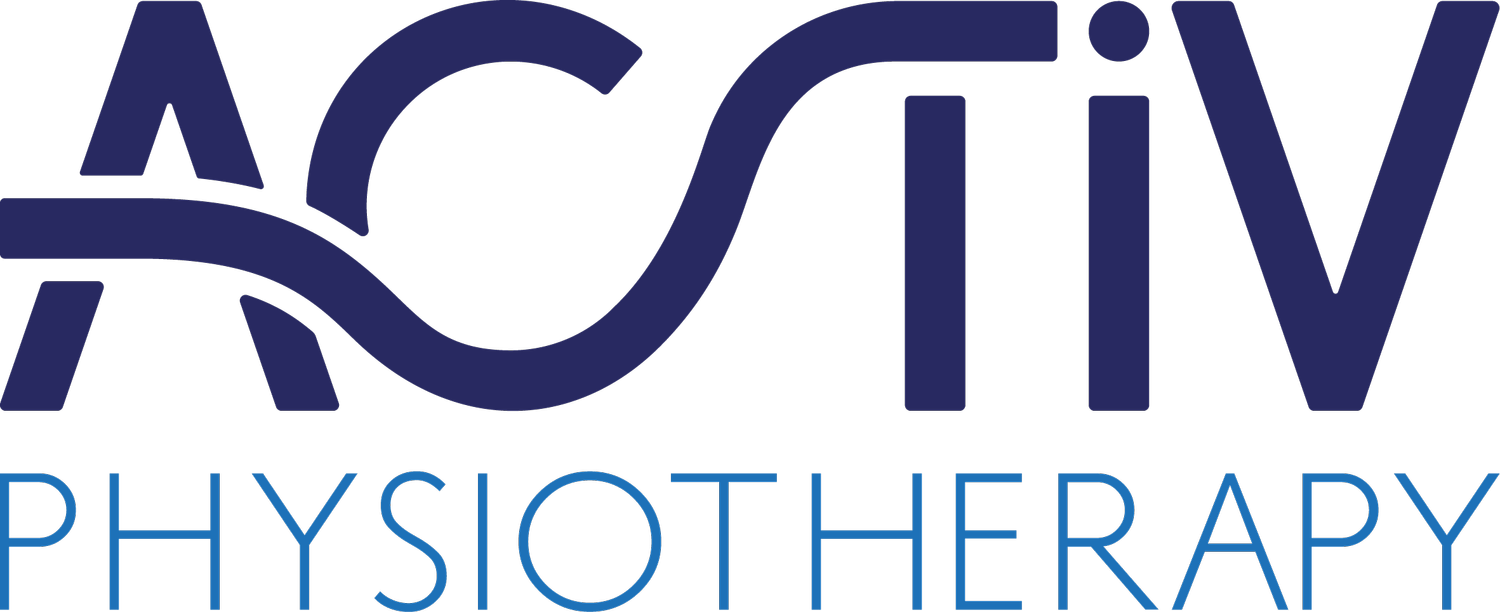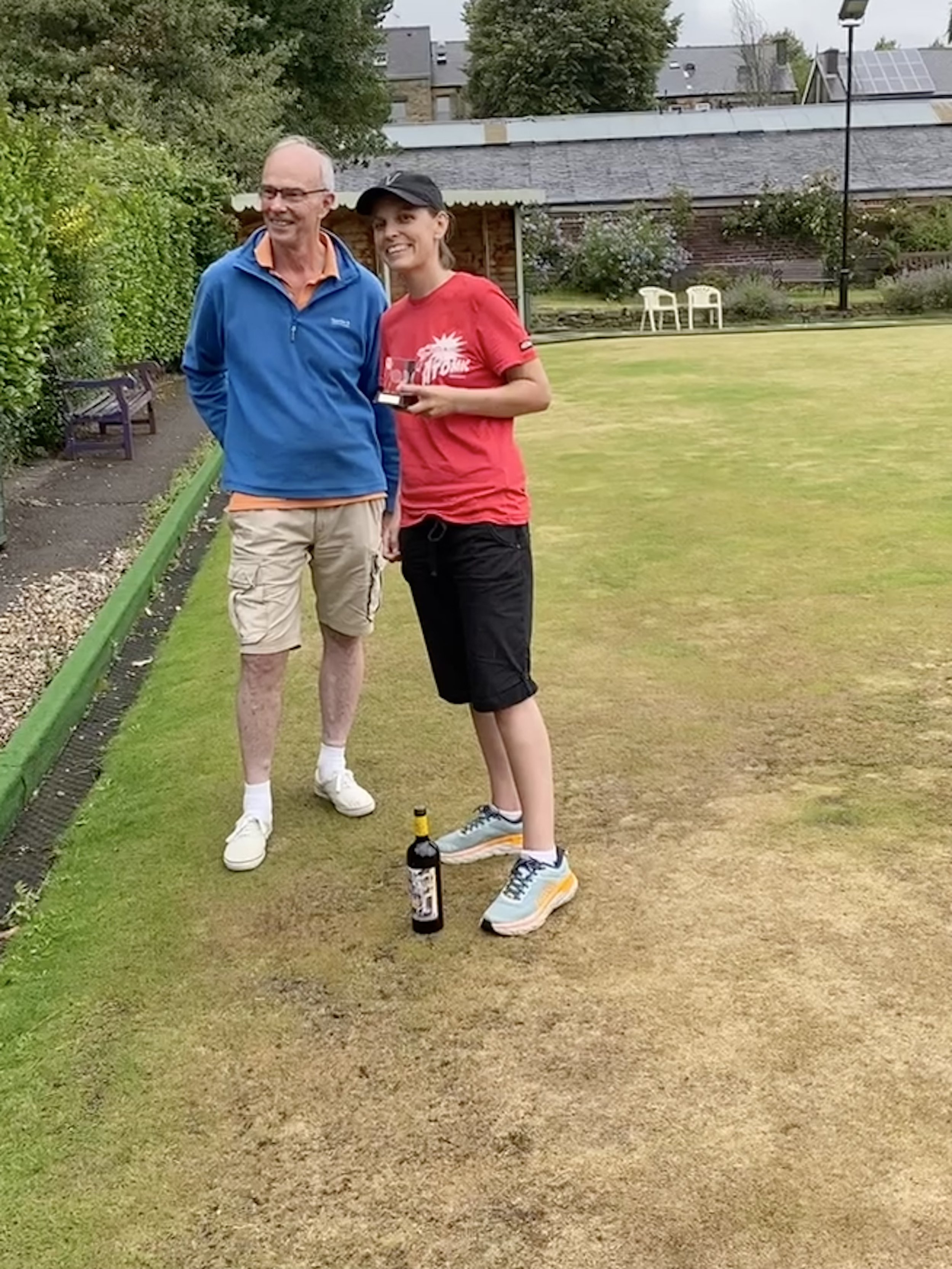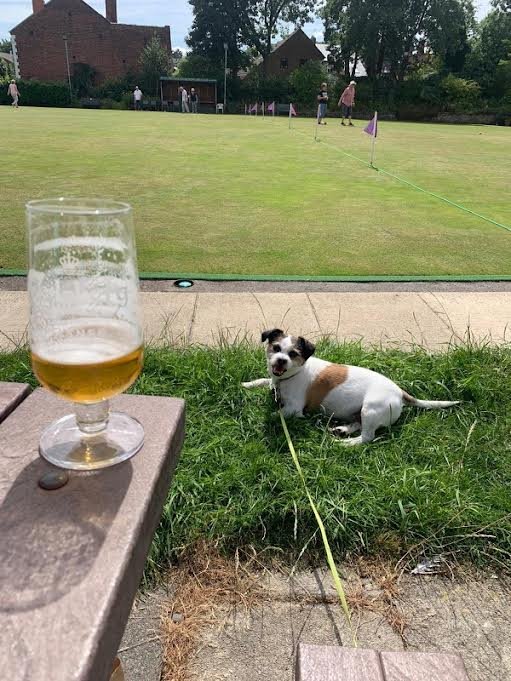A Patient Profile - Why A Low-Impact Sport has Bowled Harriet Over
Harriet Morris took up bowls three years ago at the relatively young age of 34. In her early teens and 20s, she participated in a wide range of sporting activities from football (Sheffield Wednesday juniors and then Sheffield United ladies), taekwondo and long-distance running (10K’s to half marathons). She enjoyed being very active despite an ongoing hip problem.
She explained: “I started having problems with my right hip in my late 20s (later diagnosed as bilateral hip impingement as a result of hip socket retroversion). My hip joints developed at a bit of an odd angle to what is normal, causing issues due to unnatural biomechanics, especially on my right side. Since then, I’ve had a couple of surgeries on my right hip. Pain limits the amount of impact/weight I can put through my hip and are now a no-go area. It was my mum, Di, who suggested trying a game of bowls with her. Since then, I’ve never looked back!
“When I told my friends I’d joined a club, after an initial jokey comment or two about being ‘old before my time’, they were all genuinely encouraging and think it’s great - as does my husband, Rich. Some come and watch whilst having a pint when the weather is nice.”
Harriet plays at Nether Edge Bowls Club (Home - Nether Edge Bowling Club (nebc.uk)). Because she works full time as an Acturial Consultant for a pensions company, Harriet’s unable to play in the weekday daytime leagues so plays in leagues with fixtures on weekday evenings and Saturdays.
“For the last few summer seasons, I’ve played for the Saturday B team and Monday night D team. During the winter, because the club has floodlights, there are more informal leagues to play in (internal or just against local clubs), Unless the weather is particularly bad, i.e. a waterlogged green, we play whatever the weather!”
Harriet says she gets the ‘buzz and joy sports give you’ from playing bowls.
“I enjoy competing against others, playing as an individual yet also part of a team, strategic thinking, friendship and camaraderie with team mates, whatever their age.”
The team Harriet belongs to hasn’t yet won any leagues, yet she is quick to point out ‘we’ve not been relegated either!’ There’s plenty of internal club competitions that run each year. Harriet doesn’t enter many of them due to time constraints but was thrilled to win the club’s Novice Cup two years ago.
Bowling was a good choice of sport, she says, in relation to her hip issues (which are being successfully treated by Andy).
“The action of bowling doesn’t aggravate my hips. In fact, each time you bowl a ‘wood’ (what bowls are called), you are effectively doing a lunge, so it helps strengthen my legs. Don’t let the thought of lunges put you off though. There’s all sorts of bowling techniques out there and people just adapt to what suits them and what they are able to do.”
Although bowls might not be the most demanding sport, it still provides a stimulus for maintaining muscle mass - particularly in the lower body.
You could end up walking up to three miles while you play and the sport ticks all the boxes in terms of fitness and health benefits. As you perfect your bowling technique, your arms will get a workout and your leg muscles will develop as you lunge into the throw.
Visit Bowls England - It's time to play bowls! to learn more about bowls and the rules of the game.
A Physio’s Perspective - by Andy Okwera
Our Director, Andy Okwera, takes us through Harriet’s treatment for bilateral hip impingement
Harriet was unfortunate to have suffered with a condition called Femoroacetabular Impingement.
She was born with a pelvis where the socket of her hip faces backwards instead of forwards. This means the ball-shaped head of the femur (the thigh bone) came into contact early with the socket of her pelvis when she was bending or twisting the hip. This caused significant damage to the hip cartilage and she required two operations. First, to repair the cartilage. Secondly, to change the shape of her hip socket.
Despite improvements in movement, Harriet continues to suffer with pain in the hip and lower back and had to stop playing impact sports. She also struggled with some day-to-day activities. I assessed her as having a lot of tension in the muscles around her hip and lower back which she developed over the years, and a sensitivity in the hip from the damage and after effects of her surgery.
Harriet’s physiotherapy has involved massage, joint mobilisation, acupuncture and rehab exercises. This has been useful in releasing all the tight muscles around her pelvis, improving the mobility of her hip and lower back and strengthening the weak muscles that support the hip and pelvis.
I am pleased I could help Harriet with this complicated problem. She now has more pain-free days and can continue to play bowls - the sport she loves!




